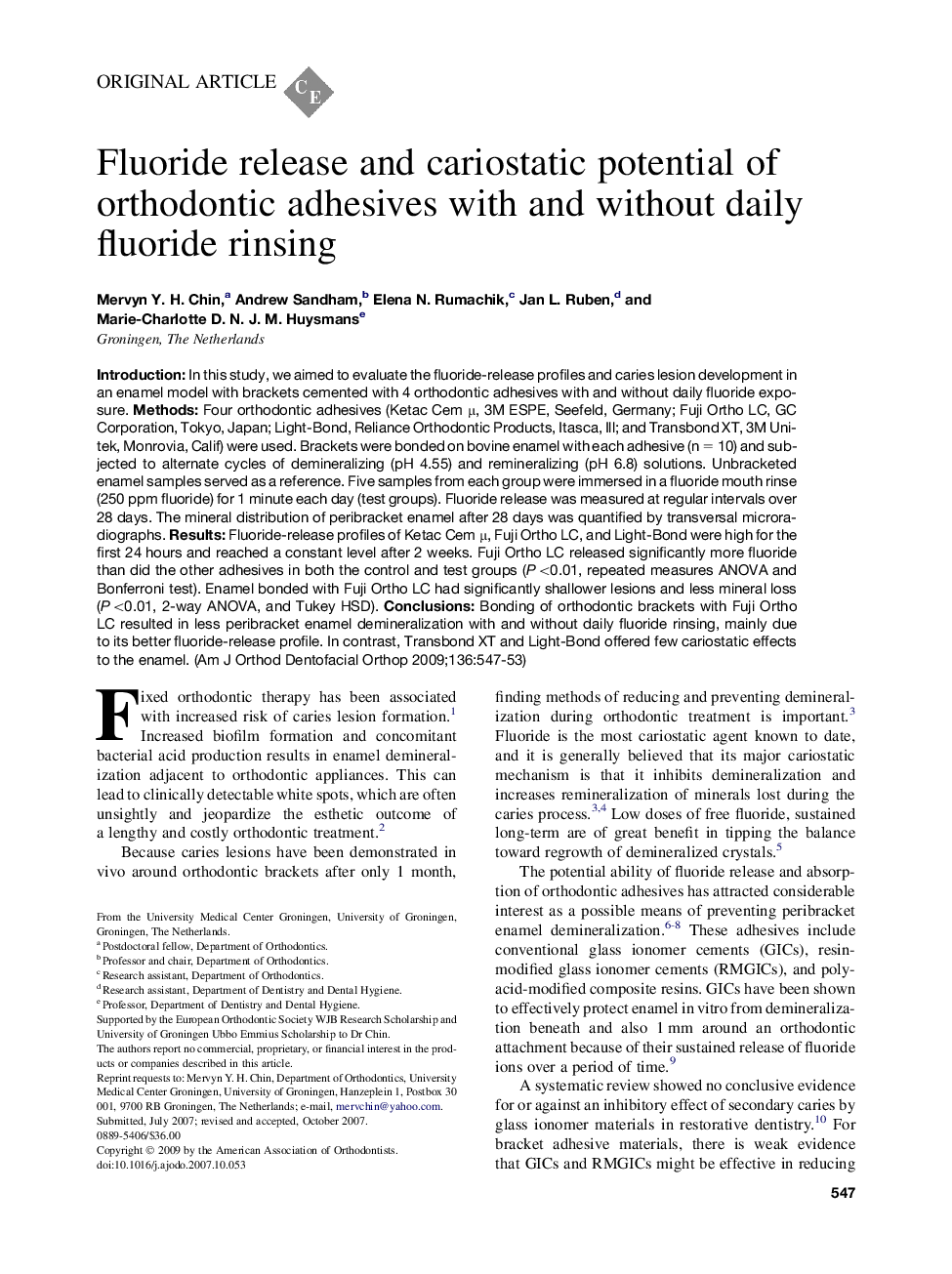| Article ID | Journal | Published Year | Pages | File Type |
|---|---|---|---|---|
| 3119844 | American Journal of Orthodontics and Dentofacial Orthopedics | 2009 | 7 Pages |
IntroductionIn this study, we aimed to evaluate the fluoride-release profiles and caries lesion development in an enamel model with brackets cemented with 4 orthodontic adhesives with and without daily fluoride exposure.MethodsFour orthodontic adhesives (Ketac Cem μ, 3M ESPE, Seefeld, Germany; Fuji Ortho LC, GC Corporation, Tokyo, Japan; Light-Bond, Reliance Orthodontic Products, Itasca, Ill; and Transbond XT, 3M Unitek, Monrovia, Calif) were used. Brackets were bonded on bovine enamel with each adhesive (n = 10) and subjected to alternate cycles of demineralizing (pH 4.55) and remineralizing (pH 6.8) solutions. Unbracketed enamel samples served as a reference. Five samples from each group were immersed in a fluoride mouth rinse (250 ppm fluoride) for 1 minute each day (test groups). Fluoride release was measured at regular intervals over 28 days. The mineral distribution of peribracket enamel after 28 days was quantified by transversal microradiographs.ResultsFluoride-release profiles of Ketac Cem μ, Fuji Ortho LC, and Light-Bond were high for the first 24 hours and reached a constant level after 2 weeks. Fuji Ortho LC released significantly more fluoride than did the other adhesives in both the control and test groups (P <0.01, repeated measures ANOVA and Bonferroni test). Enamel bonded with Fuji Ortho LC had significantly shallower lesions and less mineral loss (P <0.01, 2-way ANOVA, and Tukey HSD).ConclusionsBonding of orthodontic brackets with Fuji Ortho LC resulted in less peribracket enamel demineralization with and without daily fluoride rinsing, mainly due to its better fluoride-release profile. In contrast, Transbond XT and Light-Bond offered few cariostatic effects to the enamel.
